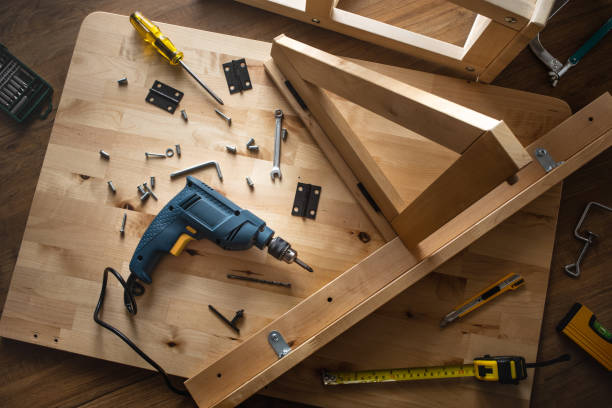Wood joinery, in its different structures, utilized to manufacture, specialty, build, and to secure our human tasks for a large number of years. As needs are, there are numerous strategies for wood joinery circling the business. In spite of the fact that they all do a similar thing, every strategy has an individual concentration and, thus, creates the other joint. As an additional upkeep of standard joinery and carpentry services.
Working on to refurbishment the bathroom, kitchens, floor tiles vanity units. This implies can be there from start to finish giving you a complete fitted kitchen, restroom or vanity units. To make a little stride in reverse, wood joinery is authoritative of two separate workpieces. Each piece must be of an equivalent thickness and must plane level along with their bordering edges. The objective of joinery is to create a point or to lengthen/develop a current workpiece.
Different systems make use of to make joints that are everything from high to sensitive and imperceptible to stylishly articulate. In that capacity, the variety of strategies a carpenter can apply to deliver a wood joint is stunning; while broad, however, the rundown of joinery techniques is additionally far-reaching rendering wood joinery a specialty that interests to carpenters of each aptitude level. The underneath review, then, mirrors the most well-known procedures for restricting two bits of wood.
Dado Joint
The dado is an up-front joint frequently make use of as a part of carpentry. Like the tongue and score joint, it consists of an indent cut into one board where the other board will fit. Contradictory to the tongue and notch, in any case, this joint joins the edge or end of one board to the focal point of another. It frequently makes the most of as a part of joining two bits of plywood together, or for assembling the backs and sides of cupboards and dressers with the top.
Butt Joints in Wood Joinery
Most of the joiners using the Butt joints are just two pieces of wood connected oppositely to each other; make use of something outer, regularly nails or screws, for quality. Reliant upon what you use for wood joinery, it can be a consummately stable joint. Be that as it may, the joint has no essential uprightness all alone. Butt joints regard to use for harsh or rural work or when time is more vital than looks. Ensure your joining system is suitable for the occupation (a metal corner section may be required for extra quality, for example). To trim, up to a butt joint, you can either countersink or attachment your nail/screw gaps.
Biscuit joinery
Roll joinery and dowel joinery are two simple approaches to interface two sheets together. These strategies are particularly useful while building cupboards, racking or combining layers to create a level surface, for example, a table top. They are most prominent when wood joinery level, for example, plywood, molecule board, or MDF (medium thickness fiberboard). You might need to combine two sheets to make a custom width board for racks or different tasks. Here we will talk about a couple of tips for making your doweling or bread joining work a win.
Miter joints in Wood Joinery
They have the upside of having more paste surface than a straight butt joint, yet the joint is still end grain. End grain is famous for not taking paste well. New pastes are amazingly reliable, and a little box made just with miters will ordinarily hold fine and dandy, yet including a spline is an intelligent thought to reinforce the joint.
